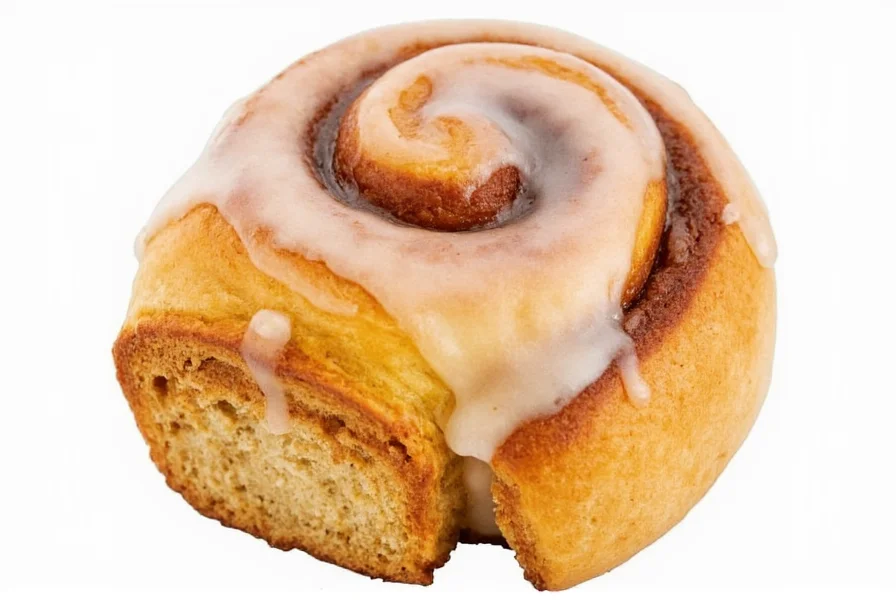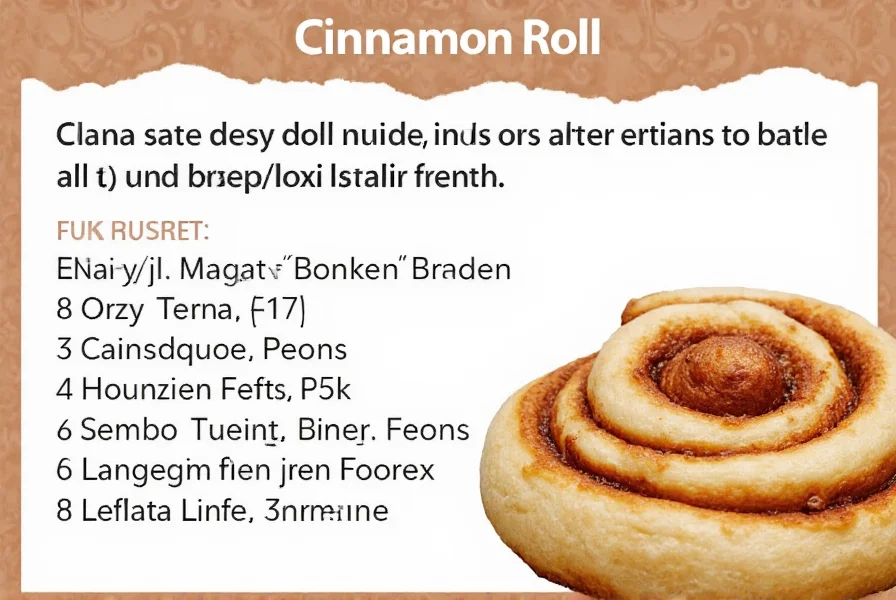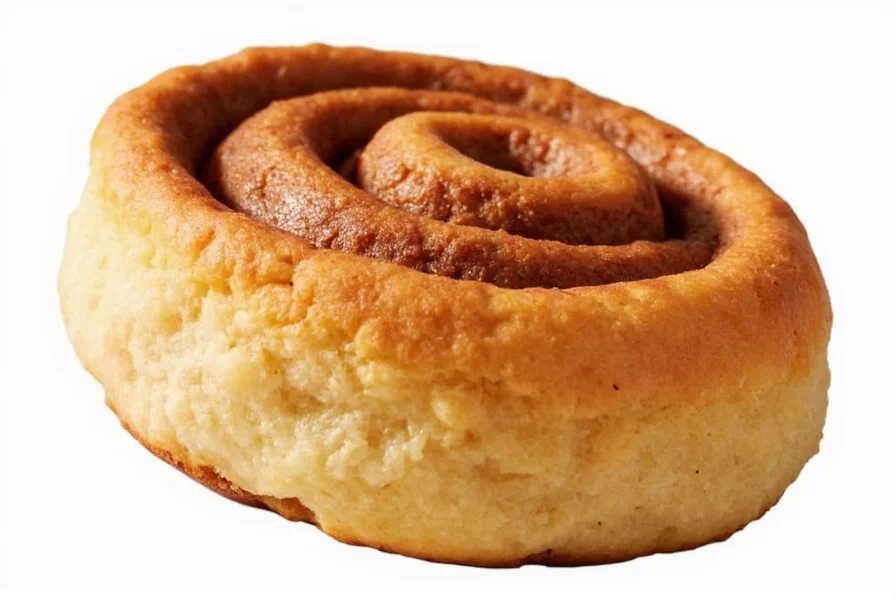Understanding the calorie content of cinnamon rolls is essential for those monitoring their dietary intake while still enjoying this beloved pastry. Whether you're tracking macros, managing diabetes, or simply curious about nutritional information, knowing what's in your sweet treat helps make informed choices.
Factors That Influence Cinnamon Roll Calorie Count
The calorie content of cinnamon rolls isn't uniform across all versions. Several key factors determine the final count:
Size Matters Most
Portion size is the single biggest variable. A small homemade roll might contain just 200 calories, while an oversized bakery version can exceed 800 calories. Consider these common size categories:
| Size Category | Approximate Diameter | Calorie Range |
|---|---|---|
| Mini cinnamon roll | 2 inches | 100-150 calories |
| Standard homemade | 3-4 inches | 200-300 calories |
| Commercial bakery | 4-5 inches | 350-500 calories |
| Oversized chain version | 6+ inches | 600-880+ calories |
Recipe Ingredients and Preparation
The specific ingredients used dramatically affect the nutritional profile. Traditional cinnamon roll recipes contain:
- All-purpose flour (providing carbohydrates)
- Butter or shortening (contributing saturated fats)
- Sugar and brown sugar (adding simple carbohydrates)
- Eggs (providing protein and additional fat)
- Cream cheese or buttercream frosting (significantly increasing calories)
A cinnamon roll nutrition facts breakdown typically shows that 50-60% of calories come from carbohydrates, 30-40% from fats, and 5-10% from protein. The generous frosting application common in commercial versions can add 100-200 extra calories per roll.

Comparing Popular Cinnamon Roll Variations
When evaluating calories in a cinnamon roll from different sources, notable differences emerge:
Homemade vs. Store-Bought
Homemade cinnamon rolls generally offer more control over ingredients and portion sizes. A basic homemade version without excessive frosting typically contains 200-300 calories. In contrast, store-bought versions often contain additional preservatives, higher sugar content, and larger portions.
Chain Bakery Comparisons
Major bakery chains serve substantially larger portions:
- Cinnabon Classic Cinnamon Roll: Approximately 880 calories
- Pillsbury Canned Cinnamon Roll: About 320 calories per roll
- Starbucks Cinnamon Roll: Roughly 330 calories
- McDonald's Cinnamon Roll: Around 370 calories
These commercial versions often contain high-fructose corn syrup, additional fats, and artificial flavors that increase both calorie count and processing level.
Nutritional Context and Health Considerations
Understanding how cinnamon rolls fit into a balanced diet requires considering more than just calorie count. A typical 300-calorie cinnamon roll contains:
- 45-55g carbohydrates (15-18% of daily value)
- 10-15g fat (13-19% of daily value)
- 25-35g sugar (50-70% of recommended daily limit)
- 3-5g protein (minimal contribution to daily needs)
While an occasional cinnamon roll won't derail a healthy eating pattern, regularly consuming high-calorie pastries can contribute to weight gain and blood sugar management challenges. For those monitoring their intake, consider these practical approaches:
- Split one roll with a friend to reduce portion size
- Choose versions with less frosting or request it on the side
- Opt for smaller "mini" versions when available
- Consider homemade versions where you control ingredients and portion size

Healthier Alternatives and Modifications
If you're watching your calorie intake but still craving that cinnamon flavor, several modifications can reduce the calorie content while maintaining enjoyment:
- Use Greek yogurt instead of cream cheese in frosting
- Reduce sugar content by 25-30% in the dough and filling
- Substitute some white flour with whole wheat flour
- Use applesauce to replace some of the butter content
- Create "cinnamon roll" oats or sweet potatoes for a lower-calorie alternative
A modified "light" version can bring the calorie count down to 150-200 per roll while still delivering that satisfying cinnamon flavor. These adjustments maintain the essence of the treat while making it more compatible with various dietary goals.
Understanding Cinnamon Rolls in Your Dietary Pattern
When considering how many calories in a cinnamon roll fit into your eating plan, context matters. For someone following a 2,000-calorie daily diet, a 300-calorie cinnamon roll represents 15% of daily intake. This isn't inherently problematic if balanced with nutrient-dense foods throughout the day.
Nutritionists generally recommend treating cinnamon rolls as an occasional indulgence rather than a daily staple. The high sugar content can cause blood sugar spikes followed by crashes, potentially affecting energy levels and hunger signals.
For those with specific health concerns like diabetes, consulting with a registered dietitian can help determine appropriate portion sizes and frequency. Understanding cinnamon roll nutritional information empowers you to make choices aligned with your health goals.
How many calories are in a small homemade cinnamon roll?
A small homemade cinnamon roll (approximately 2-3 inches in diameter) typically contains 150-250 calories. This estimate assumes a basic recipe without excessive frosting. The exact count varies based on specific ingredients and portion size.
Are cinnamon rolls high in sugar?
Yes, cinnamon rolls are typically high in sugar. A standard cinnamon roll contains 25-35 grams of sugar, which represents 50-70% of the American Heart Association's recommended daily limit for added sugars. Much of this sugar comes from both the filling and the frosting.
How does a cinnamon roll compare to other breakfast pastries?
Cinnamon rolls generally contain more calories than many other breakfast pastries. A standard cinnamon roll (300-500 calories) typically has more calories than a plain bagel (250-300 calories) or a croissant (230-280 calories), but fewer than oversized muffins which can reach 400-600 calories. The high sugar content in cinnamon rolls also makes them less nutritionally balanced than many alternatives.
Can I make lower-calorie cinnamon rolls at home?
Yes, you can create lower-calorie cinnamon rolls by making several modifications: reduce sugar by 25-30%, substitute some butter with applesauce, use Greek yogurt instead of cream cheese in frosting, and control portion sizes. These adjustments can bring the calorie count down to 150-200 per roll while maintaining flavor. Using whole wheat flour can also increase fiber content.
Why do bakery cinnamon rolls have so many more calories than homemade versions?
Bakery cinnamon rolls typically contain more calories due to larger portion sizes, higher fat content, additional sugars, and generous frosting applications. Commercial bakeries often use recipes designed for maximum indulgence rather than nutritional balance. For example, a typical bakery cinnamon roll might be 4-6 inches in diameter with thick layers of frosting, while a standard homemade version might be 3-4 inches with more moderate frosting.
Understanding the complete picture of cinnamon roll calories helps you make informed decisions about incorporating this delicious treat into your eating pattern. Whether you're enjoying a homemade version or selecting from a bakery menu, being aware of the nutritional information allows for mindful consumption that aligns with your health goals.











 浙公网安备
33010002000092号
浙公网安备
33010002000092号 浙B2-20120091-4
浙B2-20120091-4